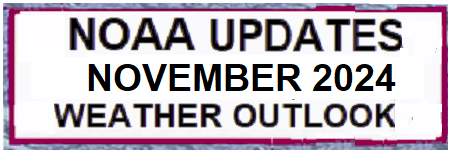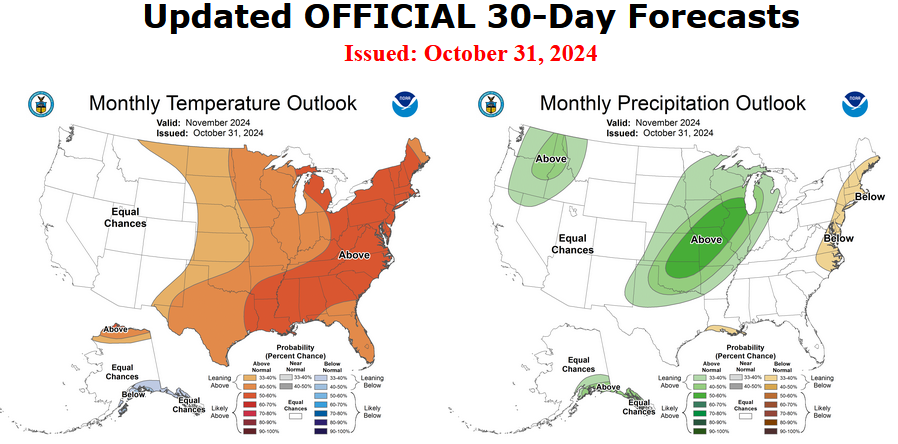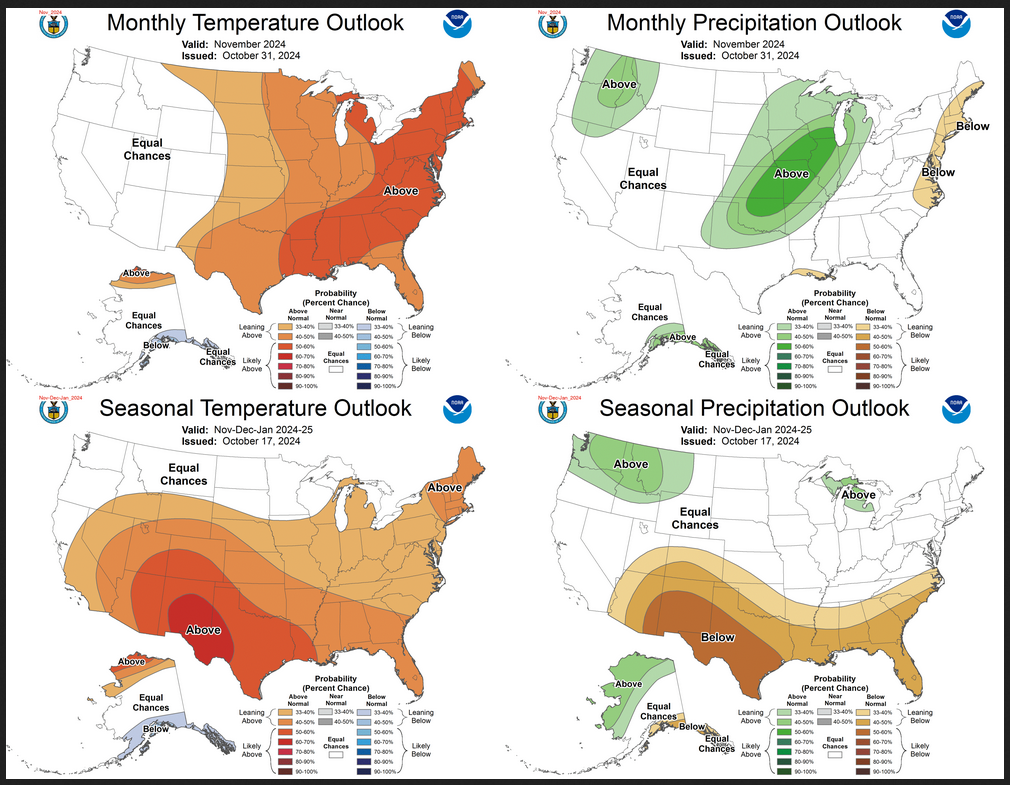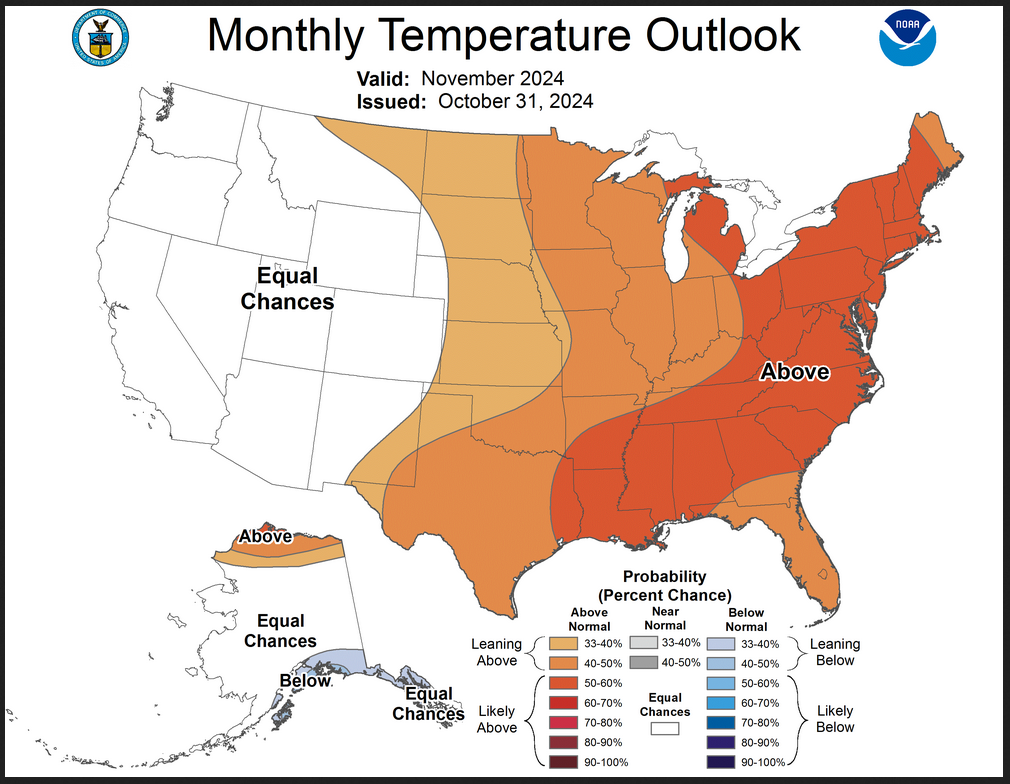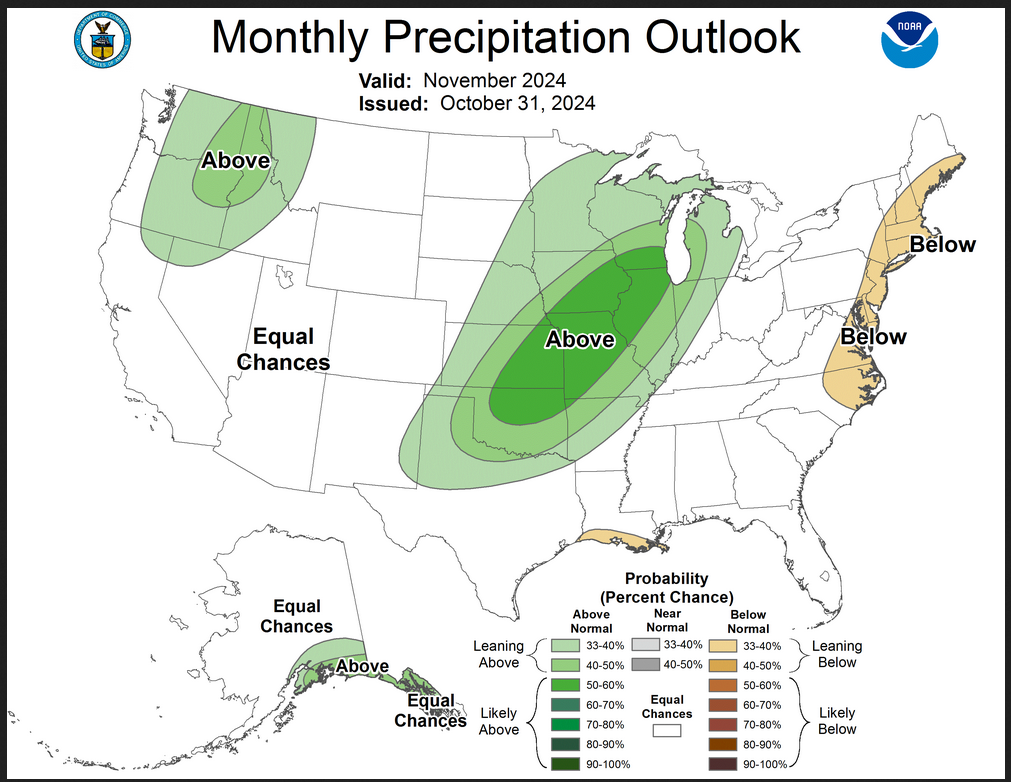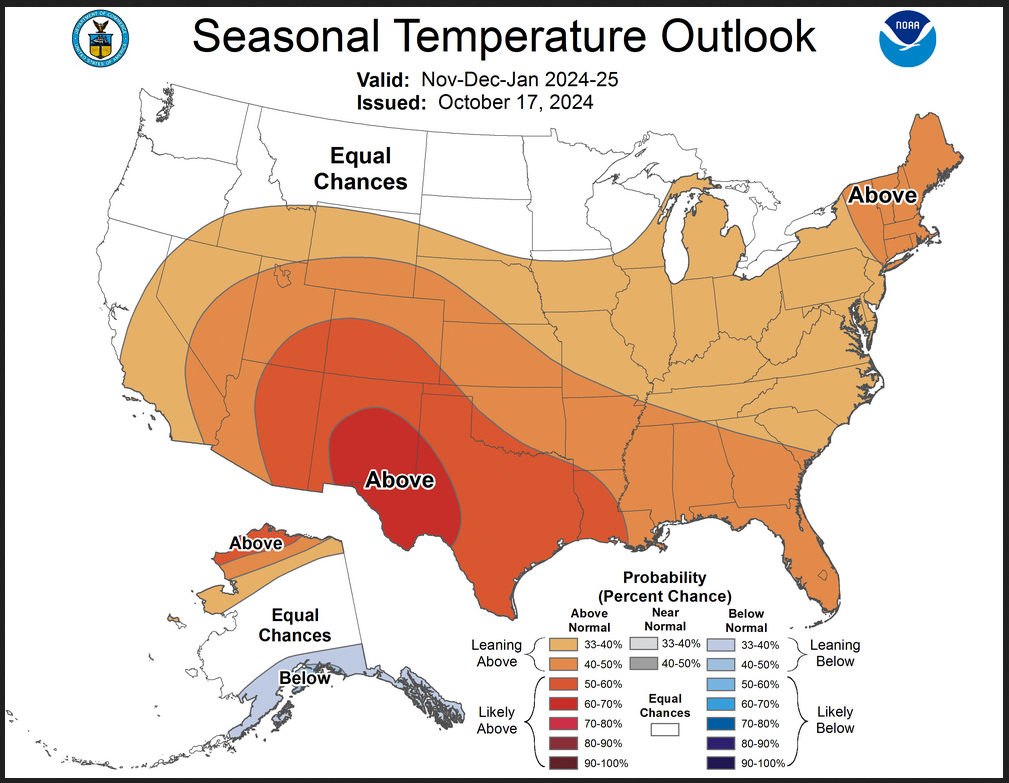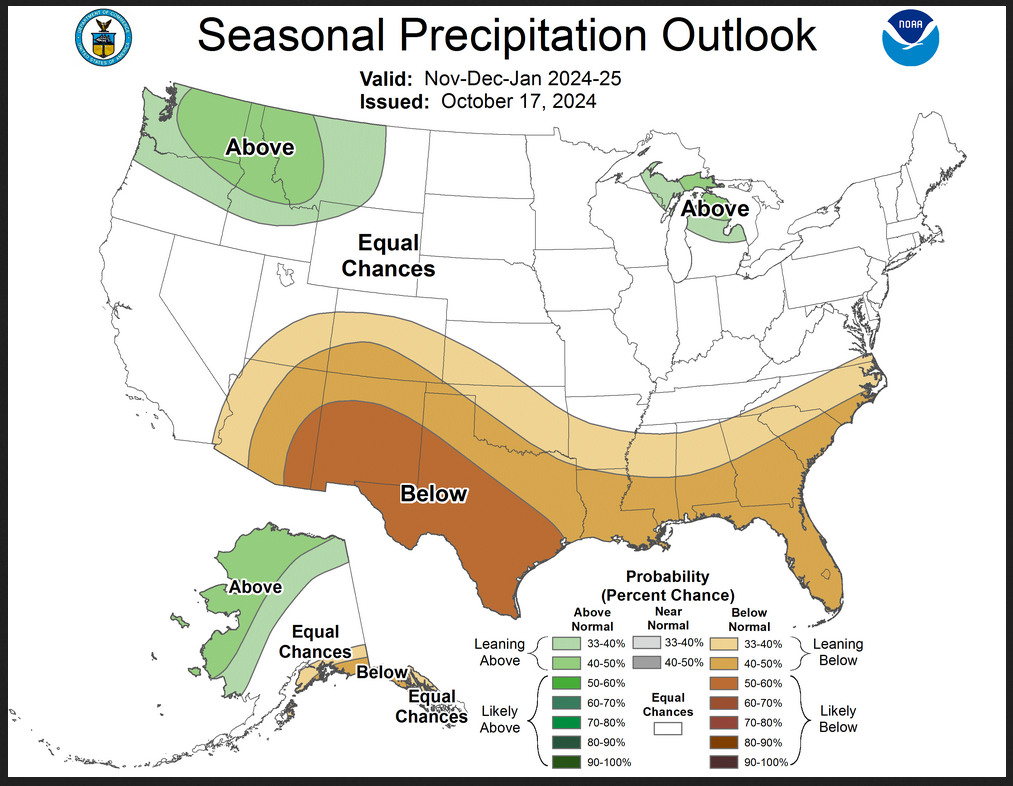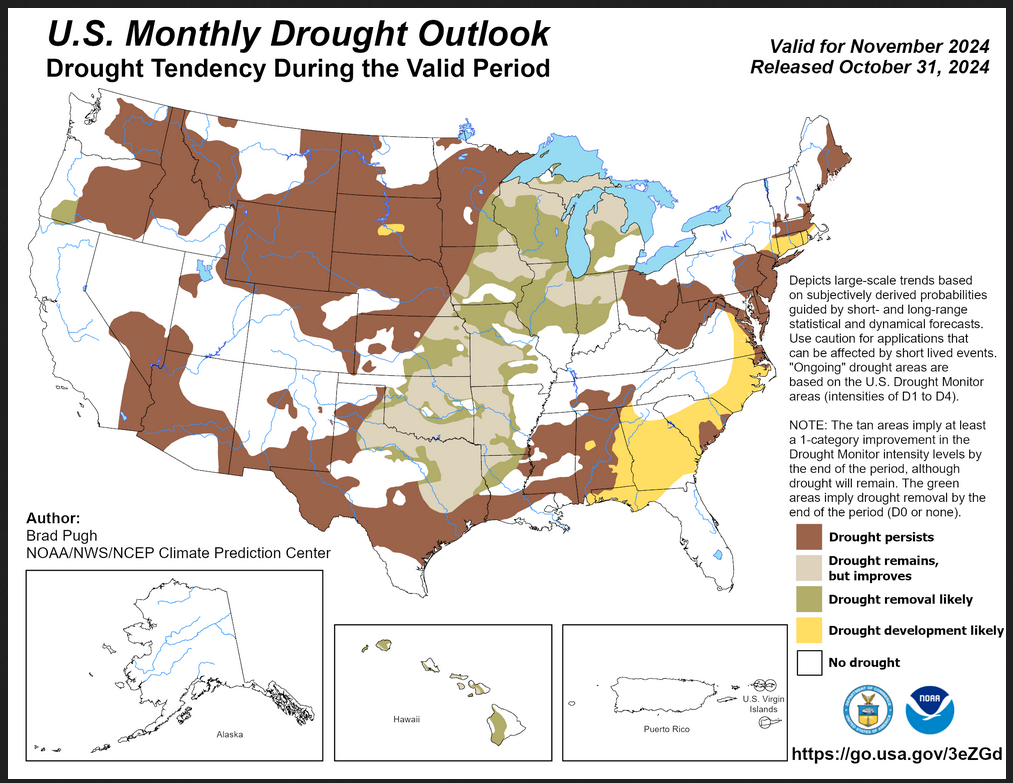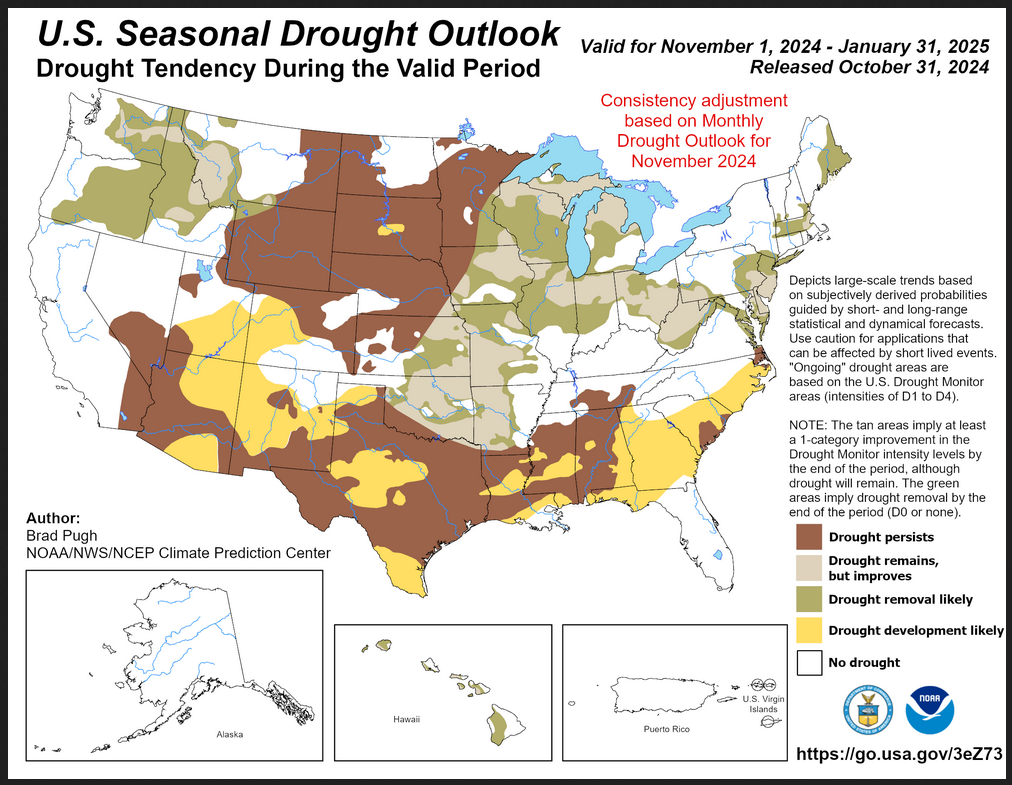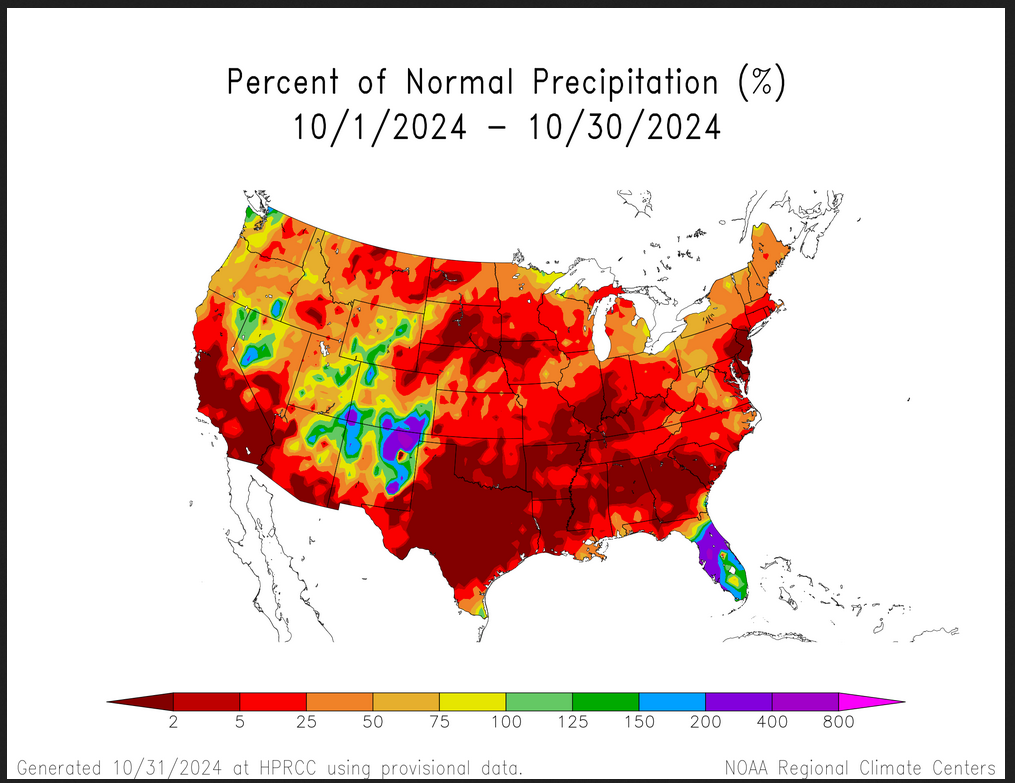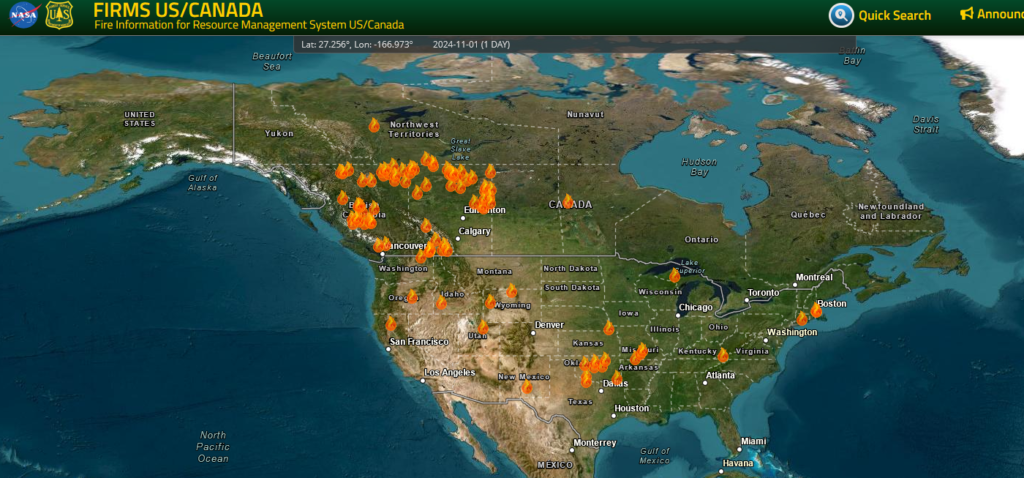At the end of every month, NOAA updates its Outlook for the following month which in this case is November of 2024. We are reporting on that tonight. In this article, I refer to November, 2024 as “The New Month”.
There have been significant changes in the Outlook for the new month and these are addressed in the NOAA Discussion so it is well worth reading. We provided the prior Mid-Month Outlook for the new month for comparison. It is easy to see the substantial changes in the weather outlook by comparing the Mid-Month and Updated Maps.
The article includes the Drought Outlook for the new month. NOAA also adjusted the previously issued three-month Drought Outlook to reflect the changes in the new month’s Drought Outlook. We also provide the Week 2/3 Tropical Outlook for the World. The Tropical Outlet includes both direct and indirect potential impacts to the Southern Tier of CONUS. We also include a whole set of the forecasts for parts of the new month. These are both useful and provide a crosscheck on the validity of the new month’s Outlook. The whole should be equal to the sum of its parts.
The best way to understand the updated outlook for the new month is to view the maps and read the NOAA discussion. I have highlighted the key statements in the NOAA Discussion.
Here is the updated Outlook for November 2024.
For Comparison Purposes, Here is the earlier Mid-Month Outlook for November
| It is important to remember that the maps show deviations from the current definition of normal which is the period 1991 through 2020. So this is not a forecast of the absolute value of temperature or precipitation but the change from what is defined as normal or to use the technical term climatology.
It is a substantial change from what was issued on October 17, 2024. Remember, it is the first set of maps that are the current outlook for November which is the new month. One expects some changes 14 days later. However, the changes to the updated new month Outlook are very significant. This then gives us some reason to question the (October 17, 2024) three-month NDJ temperature and precipitation Outlooks which are shown in the following graphic. |
NOAA provided a combination of the Updated Outlook for the New Month and the Three-Month Outlook.
The top pair of maps are again the Updated Outlook for the new month. There is a temperature map and a precipitation map. The bottom row shows the three-month outlooks which includes the new month. I think the outlook maps are self-explanatory.
To the extent that one can rely on a forecast, we would conclude that December and January will be very different than November. You can subtract November from the three-month Outlook and divide by two to get a combined December/January Outlook.However given the major change in the new Outlook outlook from what was issued on October 17, 2024, we might not trust the three-month Outlook issued on October 17, 2024. Something to think about. But the major factor is the projected slower onset of La Nina. Thus this change may be consistent with the pattern the NOAA has been predicting although they have been playing catch-up. I am still not convinced that there will be a La Nina Winter. Thus I am somewhat skeptical about the NOAA Outlooks. |
Some readers may need to click “Read More” to read the rest of the article. Some will feel that they have enough information. But there is a lot more information in the rest of this article.
| Our regular Daily Weather article can be found HERE. In addition to the short-term forecast it also provides the 6 – 10 day, 8 – 14 day, and Week 3 – 4 Outlooks. That is not a full month but close to it. So it is helpful if one wants to understand how the full-month forecast is expected to vary through the month. And the maps in the Daily Article update throughout the month. |
What we knew about November before NOAA issued their Updated Outlook for November. It should update in this article but if not, you can find the updated version at econcurrents.com daily.
Below is the current five-day cumulative forecast of precipitation (Updates can be found HERE) Unfortunately I do not have a five-day temperature forecast.

Now we look at Intermediate-Term “Outlook” maps for three time periods. Days 6 – 10, Days 8 – 14, and Weeks 3 and 4. An outlook differs from a forecast based on how NOAA uses these terms in that an “outlook” presents information as deviation from normal and the likelihood of these deviations.
Below are the links to obtain updates and additional information. They are particularly useful if you happen to be reading this article significantly later than when it was published. I always try to provide readers with the source of the information in my articles. These links may also be useful for those viewing this article on a cell phone or other small screen.
| Days 6 – 10 (shown in Row 1) | Days 8 – 14 (Shown in Row 2) | Weeks 3 and 4 (Shown in Row 3 but updates only on Fridays) |
| https://www.cpc.ncep.noaa. gov/products/predictions/610day/ | https://www.cpc.ncep .noaa.gov/products/predictions/814day/ | https://www.cpc.ncep.noaa.gov/products/predictions/WK34/ |
Showing the actual maps. They should now update automatically. The Week 3 – 4 Outlook only updates on Fridays. So below is what I call the Intermediate-term outlook. On Fridays, it extends out 28 Days. That declines day by day so on Thursday it only looks out 22 days until the next day when the Week 3 – 4 Outlook is updated and this extends the outlook by one additional week.
| 6–10
|
|
|
| 8–14 |
|
|
| 3–4 |
|
|
So we had a 28-day outl00k in advance of NOAA issuing their updated outlook for November.
Here are larger versions of the November Temperature and Precipitation Outlook maps.
NOAA (Really the National Weather Service Climate Prediction Division CPC) Discussion. I have shown certain important points in bold type. My comments if any are in brackets [ ].
30-DAY OUTLOOK DISCUSSION FOR NOVEMBER 2024
The updated November 2024 temperature and precipitation outlook is adjusted by the availability of medium- and extended-range forecast model guidance within the validation period (i.e. first 2 weeks of October) and the most recent available subseasonal forecast model guidance for the latter half of November. Additionally, the latest status of ENSO and the MJO were also considered. The lagged impacts of the MJO resulted in moderated probabilities across much of the forecast domain, as it is largely out of phase with much of the dynamical model guidance later in the month.
Temperature
The temperature guidance for early November reflects an early month cold period across the western CONUS. The early cool period is balanced by some guidance for later in November that reflects a moderation. MJO related circulation changes, based on lagged composites from a phase 7 MJO, would favor warmer solutions across the West and cooler solutions in the eastern CONUS. The uncertainty from the disagreement results in equal chances of above-, near-, or below-normal temperatures from the West Coast to the Rockies. Across the eastern CONUS, an early warm period followed by predicted above-normal temperatures for the rest of the month are mitigated by the potential for sub-monthly variability and some short periods of cold air across the Mississippi and Ohio Valleys. Across Alaska, near shore SSTs are moderating, so probabilities are low. Trends still favor above-normal temperatures along the northern coast. La Nina related forcings would favor cooler than average conditions along southern mainland Alaska and the Alaska panhandle, though guidance early in the month shows a likely period of significant warmth that wanes, so probabilities are low along the southern coast for below-normal temperatures.
Precipitation
The precipitation outlook reflects high probabilities of a wet start to the month from the Southern Great Plains to the Great Lakes. Forecast precipitation totals during the first week of the month would rule out below or even near-normal precipitation for a large swath of the central CONUS. This is a large change from the mid-month outlook and highly related to short-term variability. Some models continue a wetter pattern across the Great Plains through the latter half of the month, with a moderation along the Gulf Coast. A dry start to the month along the East Coast, combined with later month outlooks of near to below-normal precipitation is enough to favor below-normal precipitation from North Carolina to New England. Probabilities are low and uncertainty high, as the MJO would favor troughing across the central CONUS, potentially bringing moisture northward during the middle of November. Early month storm activity and the developing La Nina favor above-normal precipitation across the Pacific Northwest and southern portions of Alaska, including the Alaska panhandle.
With an updated Outlook for November, we now have adjusted Outlooks for the three-month period of Nov/Dec/Jan
| Given the major change in the November Outlook, I am skeptical about the three-month Outlook issued by NOAA. |
Drought Outlook
Here is the newly issued Drought Outlook for the month.
| You can see where drought development or persistence is likely. The summary and detailed discussions that accompany this graphic can be accessed HERE, but the short version is shown below. |
Here is the short version of the drought summary
Latest Monthly Assessment – Following a very dry October, drought coverage expanded and intensified across much of the eastern and central U.S. According to the U.S Drought Monitor valid on October 29, drought coverage for the contiguous U.S. is at 54 percent which is the largest coverage since December 2022. A wet start to November supports drought removal and improvement across portions of the Southern to Central Great Plains and Midwest. Although the updated November outlook favors above-normal precipitation for the entire Central to Southern Great Plains, the drought removal and improvement were limited to areas where the heaviest precipitation is forecast during early November. Broad-scale persistence is expected for most of the West as improvement becomes more likely beyond the end of November. Based on increasing precipitation deficits dating back to the beginning of October, declining soil moisture, and continued dry weather through at least early November, persistence and development are forecast for parts of the Southeast, Mid-Atlantic, and Northeast. Forecast confidence, especially across the Southeast, is tempered due to an elevated chance of a tropical cyclone emerging from the Caribbean Sea.
Drought removal and improvement are forecast for Hawaii. Alaska, Puerto Rico, and the U.S. Virgin Islands are likely to remain drought-free through the end of November.
We also have an updated Seasonal Drought Outlook (link).
| This three-month outlook forecast is a combination of the mid-month three-month drought forecast and the revised drought forecast for October. Since I have a low level of confidence in the NOAA Outlooks for November and December, I have a low level of confidence for this seasonal drought outlook. |
| To update this forecast (which updates on Tuesdays), click HERE |
It is useful to review the prior month.
Month-to-date Temperature as the current month evolves can be found at https://hprcc.unl.edu/products/maps/acis/MonthTDeptUS.png
Month-to-date Precipitation as the current month evolves can be found at https://hprcc.unl.edu/products/maps/acis/MonthPNormUS.png
| You see an interesting West to East pattern of warm and cool with respect to a normal October. |
| You see large areas of less-than-normal precipitation. I would have expected to see a different situation in Western North Carolina and nearby areas due to tropical activity. |
Current Fire Situation. The link is HERE.
| But they for sure have good-looking maps. I will try to provide more information on the use of this website in the future. Canada has the major wildfire problem right now. |
| I hope you found this article interesting and useful |
